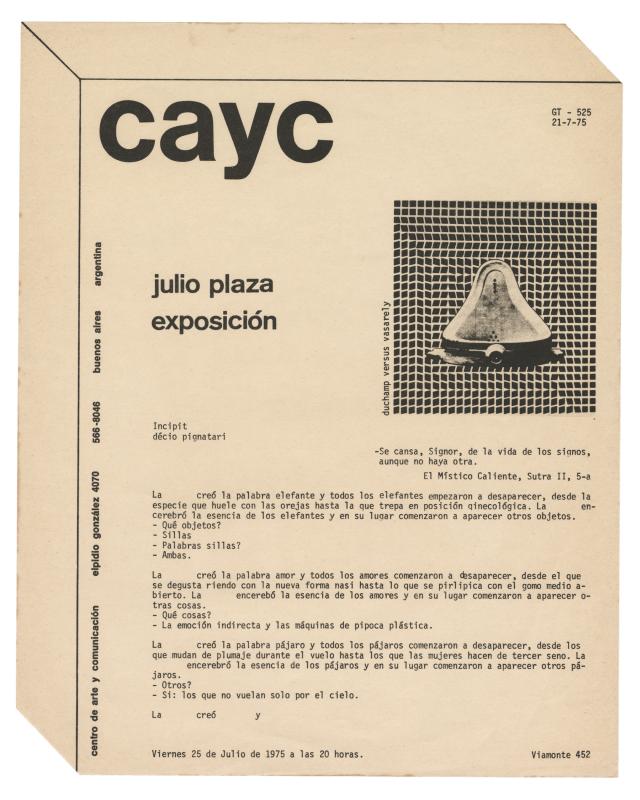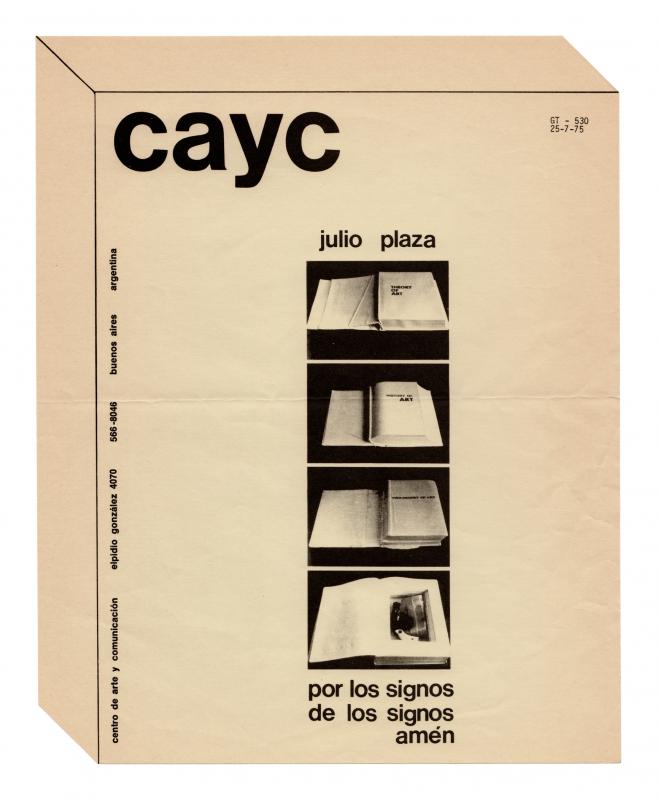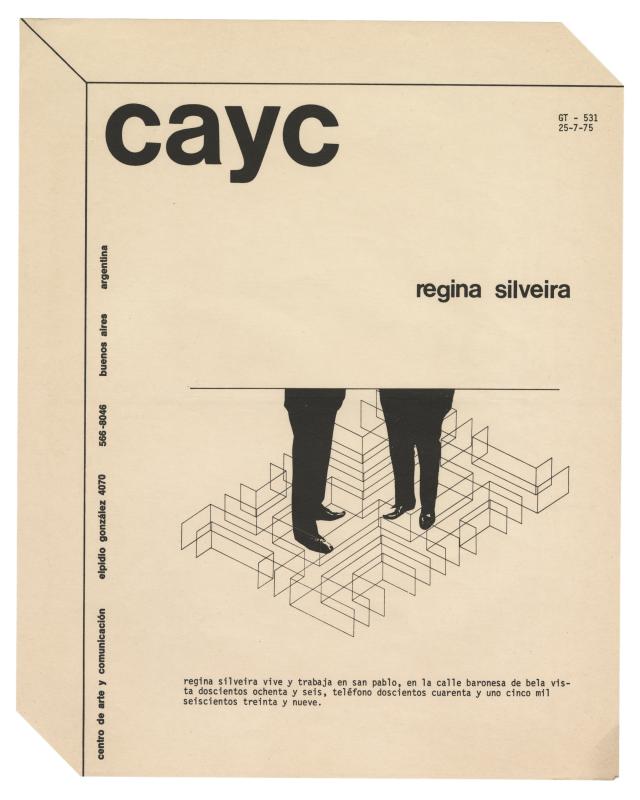Ever since it was founded, the CAYC (Centro de Arte y Comunicación), helmed by the cultural promoter, artist, and businessman Jorge Glusberg, was intended as an interdisciplinary space where an experimental art movement could flourish. The establishment of collaborative networks connecting local and international artists and critics played an important role in this process. The exhibitions shone a light on these exchanges, in which overviews of trends or individual artists provided an introduction to the innovations of international contemporary art and made Argentine and Latin American artists better known on the global scene.
Together with Julio Plaza (GT-525; doc. no. 1476852, GT-530; doc. no. 1476853) and Regina Silveira (GT-526; doc. no. 1476849, GT-531; doc. no. 1476854), Mario Ishikawa (b. 1944) was one of the Brazilian artists who was introduced to the CAYC by Walter Zanini (1925–2013), the critic, art promoter, and director of Museu de Arte Contemporânea da Universidade de São Paulo (MAC-USP) from 1963 to 1978. Glusberg and Zanini contributed to the expansion of a “transnational dialogic territory,” organizing various events such as the exchange of regional and international artists, exhibitions, and symposiums. (Luiza Mader Paladino, Caiana, 2016.)
Beginning in the early 1970s, Ishikawa chose xerography, heliography, and mail art as the ideal mediums with which to expand the circulation of his politically oriented works. In these works, he appropriated and intervened images and documents—that functioned as information supports—which he used to condemn the violence and censorship that characterized the military dictatorship that governed Brazil for two decades, from 1964 to 1985. His interventions reflected what was going on during those dark days known as “Os anos de chumbo” (The Years of Lead): burning, breaking, shooting, rejecting.




